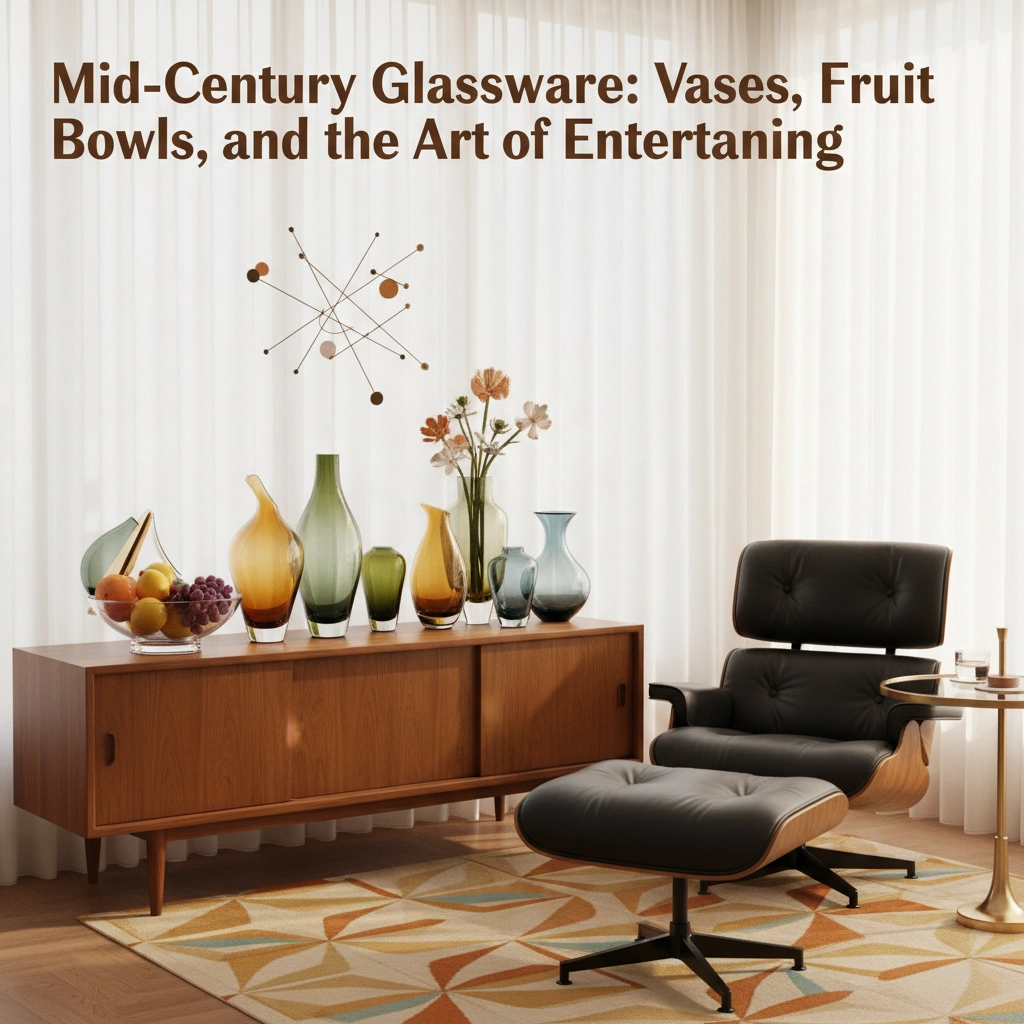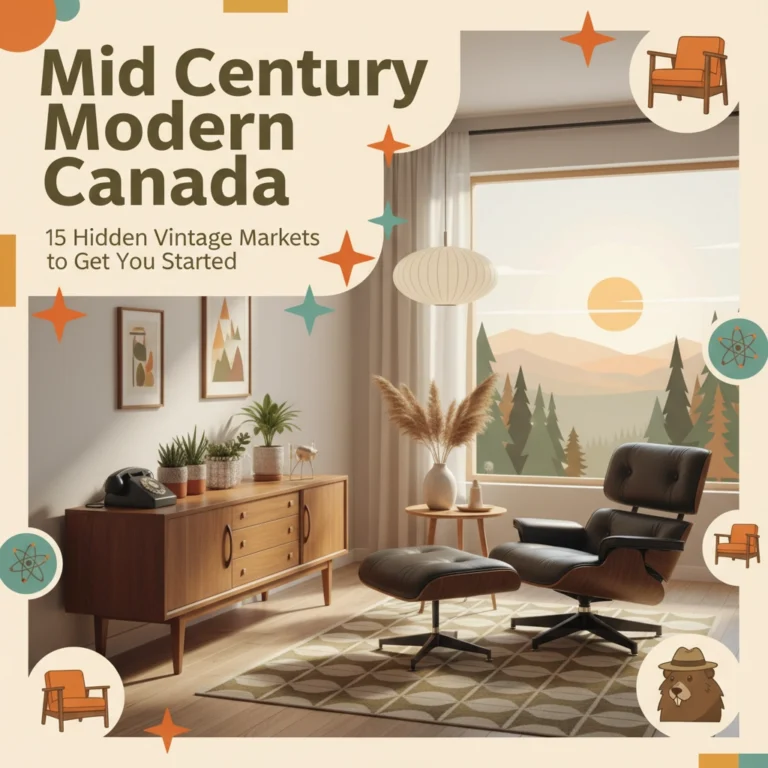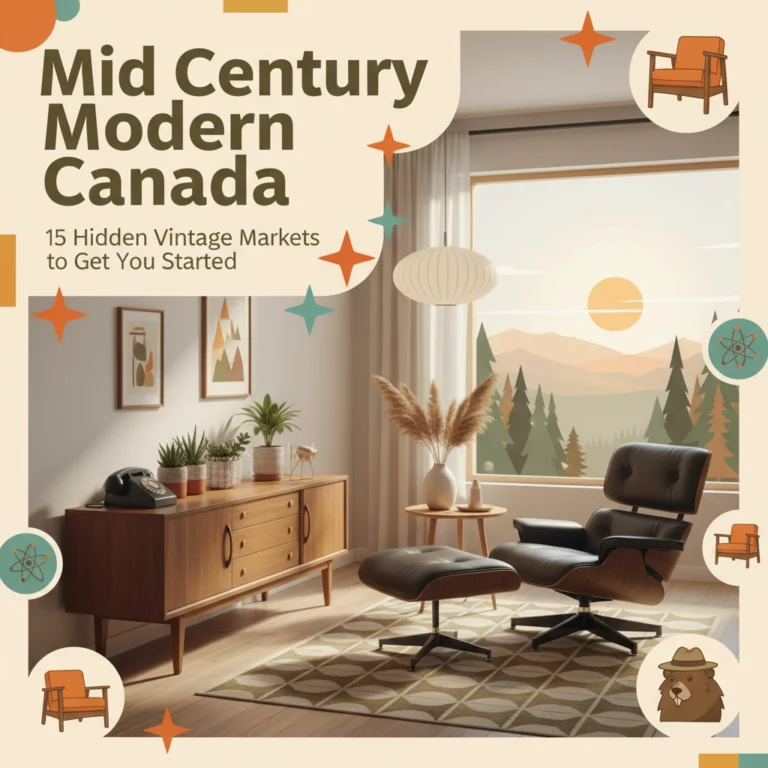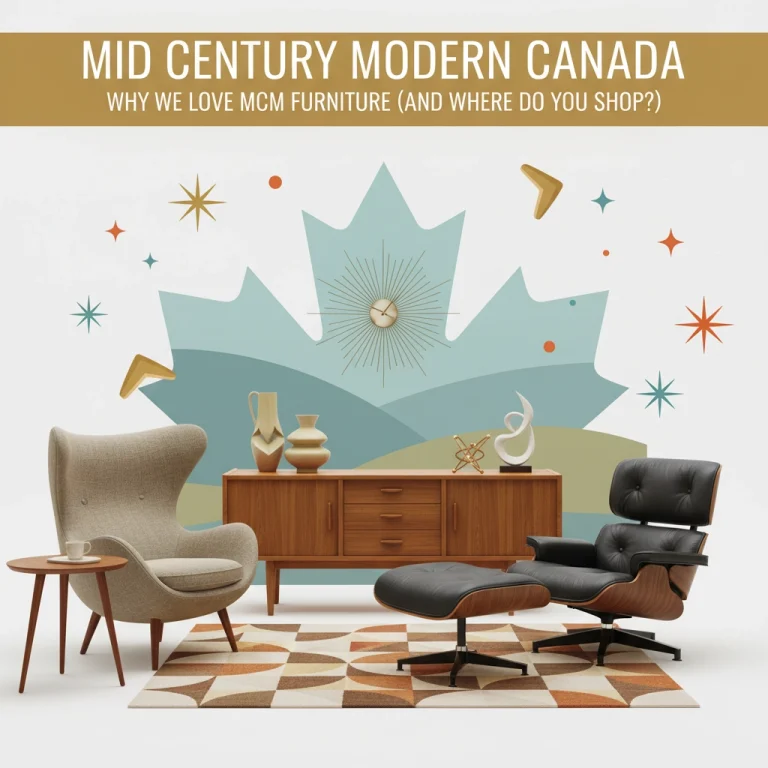If you've ever walked into a mid-century home and felt that instant "wow" moment, chances are you were looking at some seriously gorgeous glassware. We're talking about those sculptural vases that seem to defy gravity and fruit bowls that look like they belong in a modern art museum. This isn't just glass – this is the stuff that turned everyday entertaining into an art form.
From the mid-1940s through the late 1960s, glassmakers were having the time of their lives. Post-war optimism was flowing, new techniques were being mastered, and suddenly your grandmother's crystal looked positively ancient. Mid-century modern glassware became the star of the show, transforming living rooms and dining tables across North America.
The Golden Age of Glass Design
Picture this: it's 1955, and everyone's obsessed with the future. Atomic age motifs, space-age curves, and colors that practically glow in the dark. Glassmakers like Blenko in West Virginia and the Scandinavian masters at Holmegaard weren't just making functional pieces – they were creating conversation starters.
The aesthetic was all about asymmetry, clean lines, and bold experimentation. Gone were the fussy Victorian patterns and ornate details. Instead, designers embraced biomorphic shapes that looked like they'd been inspired by everything from amoebas to rocket ships. The color palette? Think avocado green, amber sunsets, turquoise pools, and cranberry reds that caught the light like jewels.
Mid-century never really went away – it's always been waiting for its next admirer.
Italian glassmakers were particularly bold during this era. Their pieces from the 1950s and '60s are instantly recognizable – loose, flowing forms with that distinctive Mediterranean flair that screams "la dolce vita." Meanwhile, French manufacturers like Art Vannes were perfecting crystal techniques that created pieces so beautiful, they belonged on pedestals.
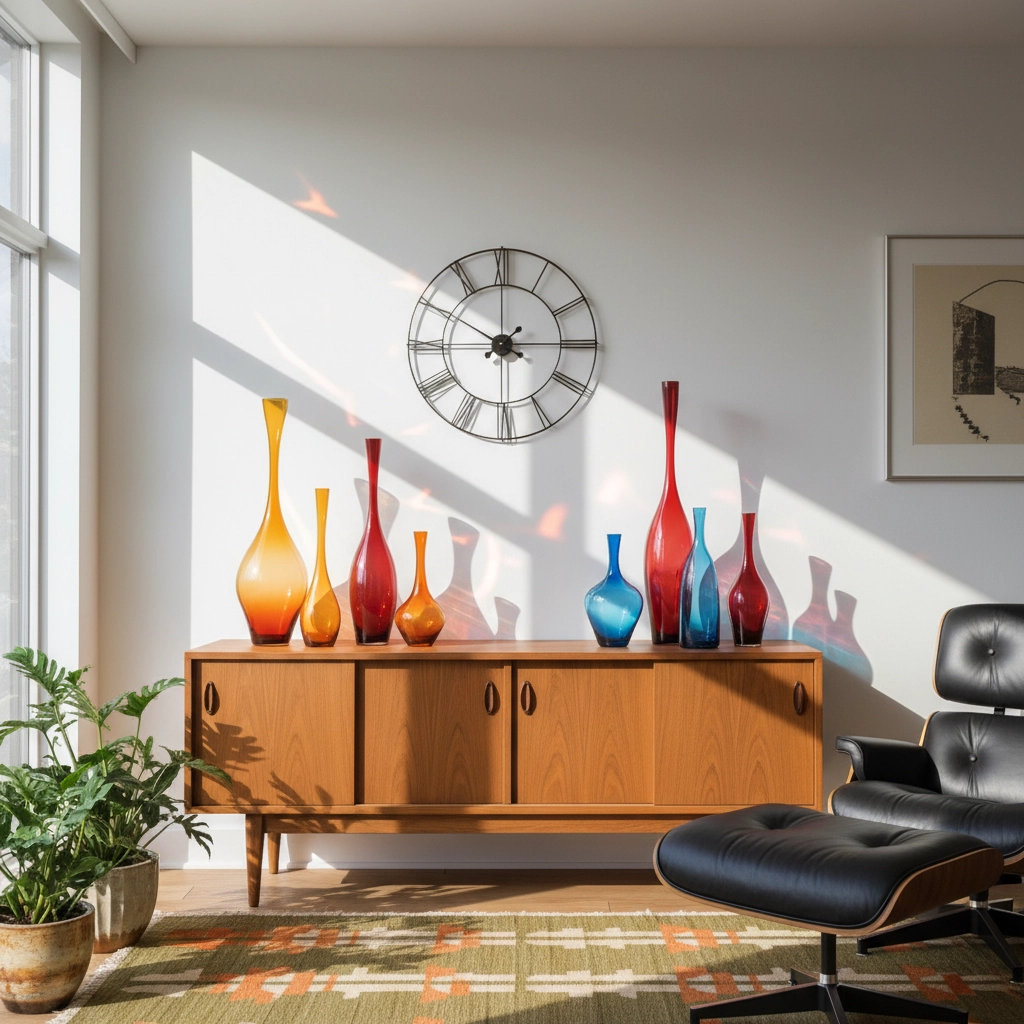
Vases That Made a Statement
Let's talk about mid-century vases for a minute. These weren't your typical flower holders – they were sculptural masterpieces that looked stunning whether they held blooms or stood empty on a windowsill. Wayne Husted's designs for Blenko featured those impossibly long, elegant necks that seemed to stretch toward the sky. Italian makers went for bulbous bases that looked like they were about to take flight.
Hand-blown techniques were the secret sauce here. Each piece carried the maker's breath, literally. You can still spot authentic mid-century vases by looking for that telltale pontil mark on the bottom – that little rough spot where the glass was broken away from the blowing rod.
The colors were revolutionary. Instead of clear crystal, mid-century vases came in vibrant hues achieved through metal oxides mixed right into the glass. Amber pieces glowed like captured sunlight, while those deep blues and greens seemed to hold entire oceans within their curves.
Art Vannes France produced some particularly stunning examples throughout the 1950s and '60s. Their clear crystal vases featured fluid, almost liquid forms that looked like frozen water mid-splash. Many bore acid-etched signatures underneath – a mark of both authenticity and pride in craftsmanship.
Fruit Bowls as Functional Art
Now here's where things get really interesting. Mid-century fruit bowls weren't just about holding apples and oranges (though they did that beautifully). These pieces were functional sculpture, designed to be the centerpiece of your dining table even when empty.
Art Vannes created some absolutely breathtaking crystal fruit bowls in the 1960s. Picture hand-blown translucent crystal with asymmetrical compositions that looked like flowers blooming or water splashing up from a pond. These weren't mass-produced items – each one was individually crafted, with swirling designs that seemed to dance in the light.
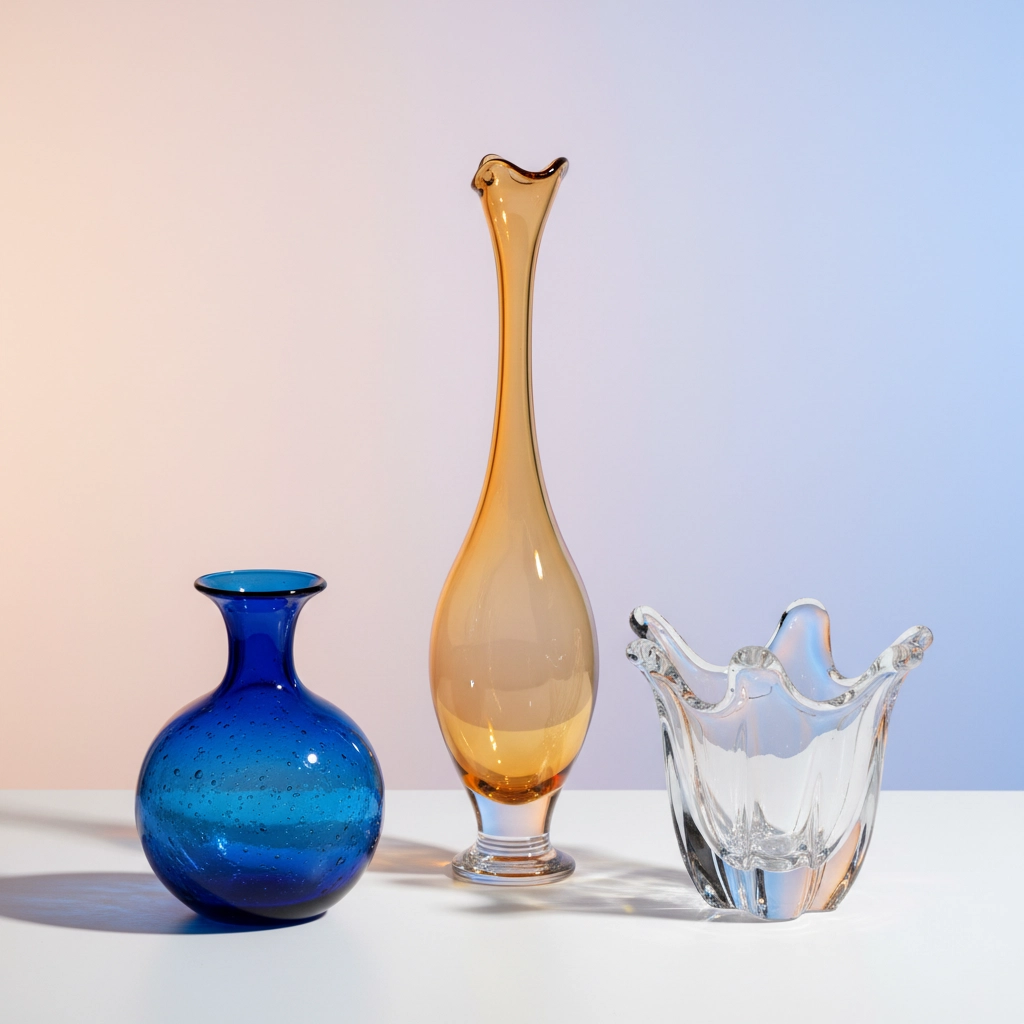
Venetian Murano glassmakers brought their own magic to the party. Their fruit bowls featured techniques like Millefiori (thousand flowers) and Sommerso (submerged), creating pieces with layers of color that seemed to exist in multiple dimensions. A single Murano fruit bowl could feature deep blues layered with gold, creating an effect that shifted and changed as you moved around it.
The design philosophy was simple but revolutionary: why should functional pieces be boring? These bowls resembled everything from splash formations to flower petals, bringing nature's organic beauty into the structured lines of modern homes.
The Entertaining Revolution
Here's the thing about mid-century entertaining – it was serious business, but in the most fun way possible. The post-war generation was ready to party, and they wanted glassware that matched their enthusiasm. Vintage glassware from this era distinguished itself through superior materials, intricate hand-blown designs, and that indefinable quality that made every drink feel special.
Quality was everything. These pieces had weight, clarity, and finish that made modern reproductions look cheap by comparison. When you held a mid-century cocktail glass, you felt the difference immediately. The raised textures, the brilliant clarity, the way the light played through colored glass – it all combined to make even a simple glass of water feel like an event.
The barware became especially trendy during this period. Cocktail glasses, shakers, and ice buckets were designed to complement the sleek, modern aesthetic of post-war homes. Everything had to look good together – your furniture, your lighting, and yes, your glassware.
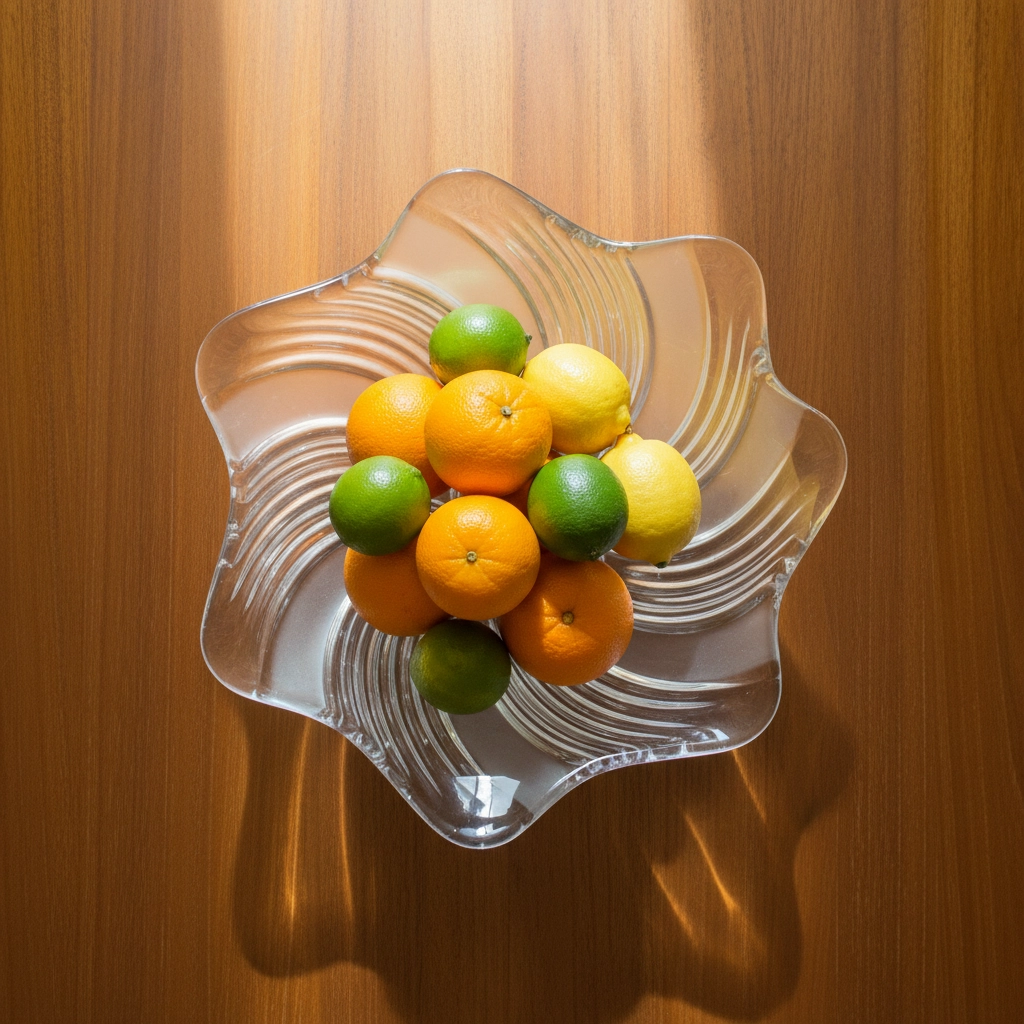
Entertaining with mid-century glass wasn't just about function – it was about creating an experience. Picture this: you're hosting a dinner party in 1962. Your table features a stunning Art Vannes fruit bowl filled with fresh citrus, catching the light from your atomic-age pendant lamp. Your guests' cocktails are served in hand-blown glasses that feel substantial and special. The entire evening feels elevated, sophisticated, modern.
What Makes Them Collectible Today
So why are collectors going crazy for mid-century glassware today? It's not just nostalgia (though that's part of it). These pieces represent a perfect storm of factors that make them irresistibly collectible.
Craftsmanship is the big one. The techniques used during the mid-century period – hand-blowing, acid-etching, complex color layering – require skills that are increasingly rare today. Many pieces from this era were made by master craftsmen who learned their trade over decades.
Rarity plays a huge role too. Unlike mass-produced modern glassware, many mid-century pieces were made in limited quantities. When a particular vase or bowl breaks, that's one less in existence forever. The supply keeps shrinking while demand keeps growing.
Then there's the design factor. Mid-century pieces aren't just old – they're timeless. A 1960s Art Vannes vase looks just as fresh and modern today as it did sixty years ago. Maybe even more so, because we've had time to appreciate how ahead of their time these designers really were.
Authentication adds another layer of collectibility. Many pieces from this era lack obvious branding, making knowledge and expertise essential. Collectors become detectives, learning to identify pieces by their shapes, colors, and subtle maker's marks.
Styling Mid-Century Glass in Modern Homes
Ready to bring some mid-century magic into your own space? Here's the beautiful thing about these pieces – they work with almost any decorating style. Mid-century glass has a timeless quality that complements everything from minimalist modern to maximalist eclectic.
Start with one statement piece. A bold vase or sculptural fruit bowl can anchor an entire room. Place it where natural light can play through the glass – near a window or under a pendant light. The way mid-century glass catches and refracts light is pure magic.
Color coordination is key, but don't be afraid to mix. A deep amber vase pairs beautifully with blue accents, while clear crystal pieces work with absolutely everything. The organic shapes of mid-century glass soften the hard lines of modern furniture, creating perfect balance.
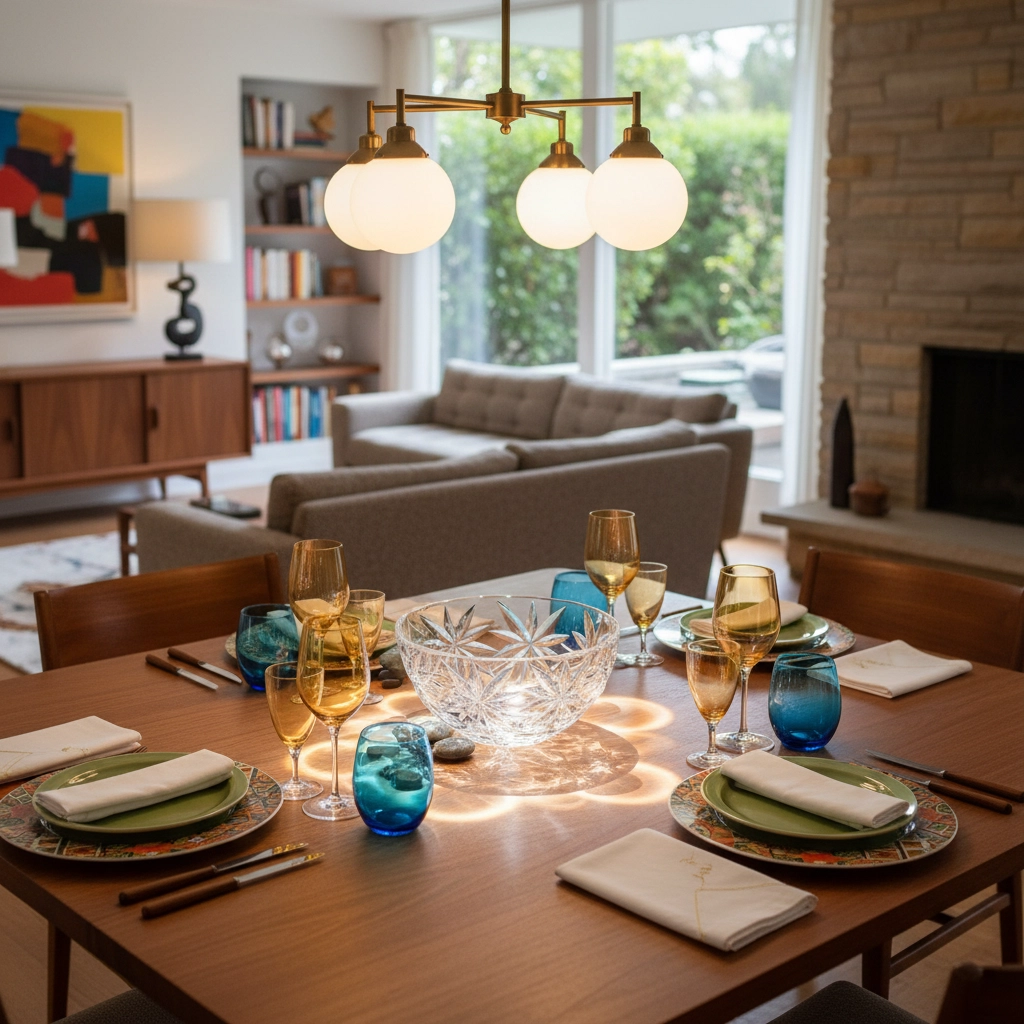
Group pieces thoughtfully. Three vases of varying heights create visual interest, while a collection of small bowls can be scattered throughout a room to create cohesion. Remember – these pieces were designed to be seen and appreciated, not hidden away in cabinets.
Don't overthink the contents either. Mid-century vases look stunning with simple, architectural branches or single-variety flowers. Fruit bowls are gorgeous filled with citrus (the colors play beautifully together) or left empty to showcase their sculptural qualities.
Finding Your Perfect Pieces
The hunt for authentic mid-century glassware is half the fun. Look for those telltale signs: hand-blown imperfections (they're features, not bugs), pontil marks on the bottom, and that substantial weight that comes from quality materials.
Check the details carefully. Many Art Vannes pieces have acid-etched signatures, while Italian glass often features maker's labels or distinctive color techniques. Don't be afraid to turn pieces upside down and examine them closely – authentic pieces will reward your scrutiny.
The perfect piece is out there, waiting for someone who appreciates its story.
Ready to start your own collection of mid-century treasures? List your finds for free on Mid Century Classifieds and connect with fellow enthusiasts who understand the magic of well-designed glass. Whether you're buying or selling, every piece has a story worth sharing.


